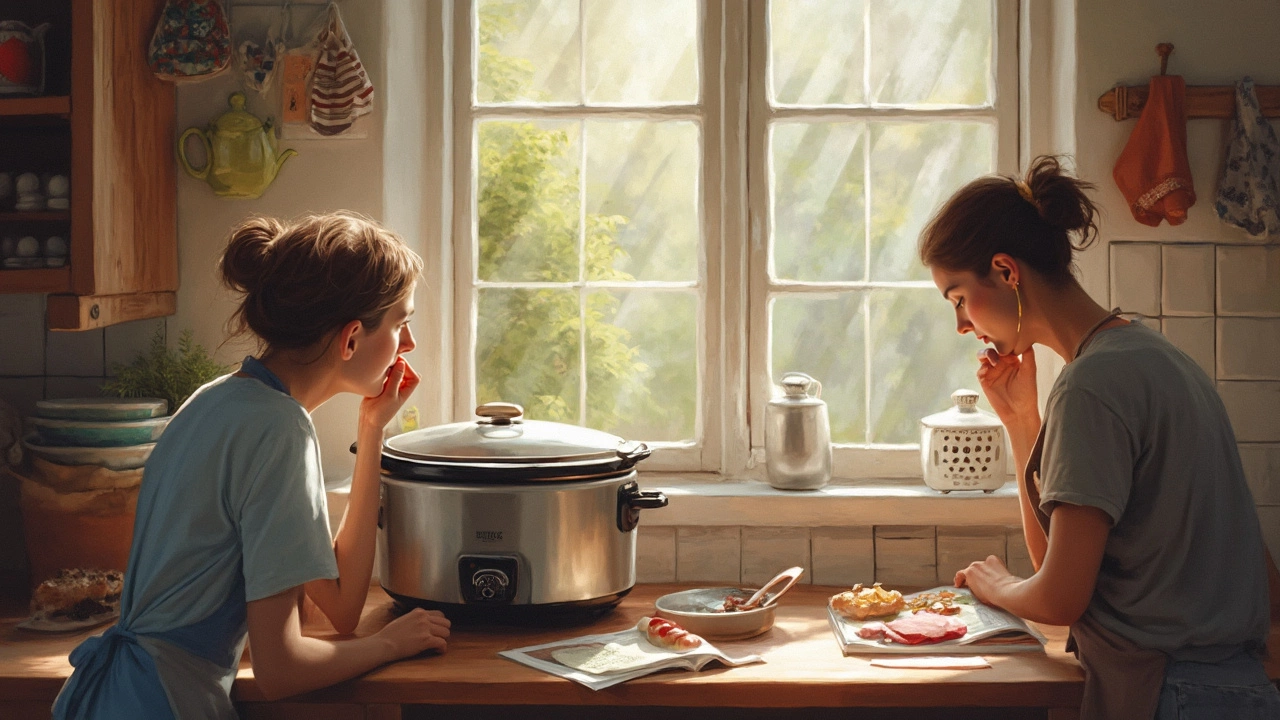Condensation in the Kitchen: What It Is and Why It Matters
Ever notice water droplets forming on the inside of your oven door or on cabinets after a big pot of soup? That’s condensation – the same thing that makes a bathroom mirror foggy, but in a place where you cook. When hot, moist air meets a cooler surface, the water vapor turns into liquid droplets. In a kitchen, this can change the texture of food, make appliances rust, and even invite mold.
Understanding condensation helps you keep your meals tasting great and your kitchen staying fresh. Below we’ll break down the main reasons it shows up, what it can do to your food, and a handful of easy tricks you can start using today.
Why Condensation Forms While You Cook
Every time you boil water, steam rises. If that steam hits a cold oven wall, a metal pan, or a glass lid, it loses heat fast and turns back into water. The cooler the surface, the more droplets appear. This happens most often when you:
- Cook with lids on for a long time – the steam has nowhere to escape.
- Use a fan oven that cools the interior quickly after you turn it off.
- Store hot dishes in the fridge without letting them cool first.
Each of these actions pushes moist air onto surfaces that haven’t warmed up yet, creating a perfect environment for condensation.
Practical Ways to Reduce Kitchen Condensation
You don’t need a lab to keep moisture under control. Try these simple habits:
- Ventilate. Turn on the range hood or open a window while boiling, steaming, or roasting. Even a few minutes of fresh air moves moist air out.
- Leave lids slightly ajar. If you’re simmering sauce, tilt the lid just enough for steam to escape. You still keep heat in, but you stop a pressure buildup.
- Cool before refrigerating. Let leftovers sit for 10‑15 minutes at room temperature, then pop them in the fridge. This stops hot steam from condensing inside the fridge.
- Use a dehumidifier. In humid climates, a small kitchen dehumidifier can pull excess moisture from the air, keeping cabinets and countertops dry.
- Wipe surfaces promptly. A quick towel swipe after cooking dries any droplets before they sit long enough to cause rust or mold.
These steps are quick, cheap, and they make a noticeable difference.
Condensation isn’t just a nuisance; it can affect food quality too. Moisture on the outside of a baked loaf can make the crust soggy, while excess steam inside a roasting pan can prevent browning. By managing the steam, you get crisper edges and better flavor.
Finally, keep an eye on your appliances. If you see water pooling around the back of your fridge or inside the oven cavity, it might be a sign of too much condensation. Wipe it up, check the door seals, and make sure the appliance is level. A well‑sealed door prevents humid air from slipping in and out.
In short, condensation is a natural part of cooking, but it doesn’t have to be a problem. A few habits – vent, lid‑tilt, cool before fridge, wipe down, and dehumidify when needed – will keep your kitchen dry, your food tasty, and your appliances lasting longer. Give these tips a try on your next cooking session and notice the difference for yourself.
Is it Safe to Put a Tea Towel Under a Slow Cooker Lid?
Wondering if you can put a tea towel under your slow cooker lid? This article sheds light on the safety concerns, why some cooks do it, and whether it really improves your dishes. You'll find practical tips for using slow cookers without risking kitchen mishaps. Discover alternatives to using a tea towel for keeping your meals just right. Get the real story and avoid common pitfalls when trying out this home-cooking hack.
